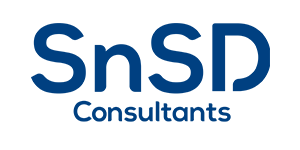Why do we still have major safety events even with a team of 200+ years of experience?
“Organisations have no memory. Only people have memories and after a few years people move on, taking their memories with them…”
Prof Trevor Kletz, prolific British author and expert on safety engineering
Kletz is credited with introducing the concept of “inherent safety”; he favoured engineering out the risks and lamented the tendency to blame accidents on the worker or human error. However, he was also very pointed in his views on the importance of knowledge retention as part of the safety system.
An often-seen figure is that human error contributes to 80% of accidents in the oil and gas industry. Professor Andrew Hopkins (author of numerous books on major disasters, including more recently “Disastrous Decisions” covering the Macondo incident) suggests that it perhaps even lies closer to 100%. But he calls it misleading and challenges organisations to dig deeper, into why the human error occurred. One of the more obvious areas one can look for causes behind human error is in training or competency management.
On 25 September 1998, a pressure vessel ruptured at Esso’s Longford gas plant in Victoria Australia. This quickly resulted in a serious jet fire, which spread to a large part of the plant. Fires lasted two days before they were finally extinguished. Two workers were killed and eight others injured. Natural gas supply to the state of Victoria was severely disrupted and were not fully restored until weeks later.
The collective experience of those presents at the Unit where the accident started was more than 200 years and yet the Commission of Enquiry into the incident found that “no one recognised the hazards associated with the plant conditions which culminated in the explosion and fire.… there was clearly a lack of knowledge or understanding of cold temperatures.”
Both Hopkins and Ketz are emphatic that there are no “new” incidents, but we see the same acts being played out again an again. A crucial reality in the energy industry is that stakes are high, and gaps in knowledge and ability can mean the difference between safety and disaster.
How do we prevent these mistakes?
What is HSE Competency Management and Assurance?
In the energy industry, Health, Safety, and Environmental (HSE) risks are omnipresent, whether on offshore rigs, in power plants, or across vast energy networks. Competency management involves ensuring that individuals within the organization possess the necessary skills, knowledge, and behaviour to perform their roles safely and effectively.
Ensuring the right knowledge is in place is an important step but it’s not the only step … competency is the demonstrated ability to do something. If we don’t move from “I know this” to “I can do this”, it’s like giving your kids the car keys after a theoretical driving exam.
True competency assurance means systems and processes designed to confirm, verify, and continuously improve the competency levels of employees, ensuring they are not just trained but coached and capable of handling the complexities and risks inherent in their jobs.
The High Stakes: Why Competency Matters in Energy
In the Energy sector, great strides have been made in safe work practices, yet it remains a high risk industry. The Institute Association of Oil and Gas Producers (IOGP) reported 27 fatalities in 2023, and more than 30,000 days of work lost through injuries. Ensuring employees are competent is not just a regulatory requirement – it’s a moral and business imperative. Hence, the vital importance of a robust HSE competency management system.
Key Components of HSE Competency Management and Assurance
- Competency Requirements: These frameworks outline the specific skills, knowledge, and behaviors required for each role within an organization. We define the key requirements, as well as the criteria for closing these, and map these against an organisation’s roles. In HSE these competencies can include those needed for maintaining critical barriers as well as general HSE competencies. In recent years there has also been an increasing the focus on leadership competencies; in their report on the catastrophic BP Macondo explosion and spill in the Gulf of Mexico, the Chief Counsel cited not only poor training, but also ineffective leadership as key failures.
- Competency Assessment: Regular evaluations of employee competency are crucial. In addition to interviews and assessments of “on the job” experience, these can involve desktop assessments and tests, or practical simulations where individuals are tested on how they would react in real-world situations.
- Gap Closure: It can be a common mistake to translate “competence gap closure” as equivalent to training. In fact, a good competency system is composed of not only training, but development in all its many forms, from coaching to on-the-job experience.
Competence does not remain constant with time; experienced staff might be replaced by a new joiner, knowledge can wane with time, a new role might demand new skills, new regulations or advances in training or work methods might trigger a new assessment. Competencies can be an ever-moving target.
Even the smallest competency gap in HSE can lead to serious consequences. The energy sector is one of the most regulated and safety-conscious industries but it’s also one of those with the highest risks. Proper HSE competency management and assurance are the foundation of ensuring safety, minimizing risk, and protecting both people and the environment. As the industry evolves, so too must our approach to competency, leaving no room for complacency.
In line with our philosophy of moving from paper to people, SNSD promotes the Rising Stars programme to deliver a more mature Safety Culture, empower front line leaders, cultivate the skill sets to take ownership of process safety responsibilities and even increase retention of staff through upskilling and modelled leadership. It moves beyond competencies as “tick box” exercise or numbers game and fosters skills through onboarding, self-assessments, coaching and recognition.
SNSD is currently working together with our partners to help our clients implement, enhance and update their competency management. Technology can help with this and other aspects of competence management. Well-thought-out digital platforms help organise employee data, alert us to gaps or refresher courses, and can link us to gap closure options. The energy sector has been one of the primary adopters of VR and technology-based training and SNSD’s partners are at the forefront in offering solutions.
Whether it’s getting the basics right, or putting in place gamechangers like Rising Stars and technology-based solutions, get in touch with us if you’d like to know more about the possibilities for your company.
……
Josh Harrop
SNSD Consultants | Partner



